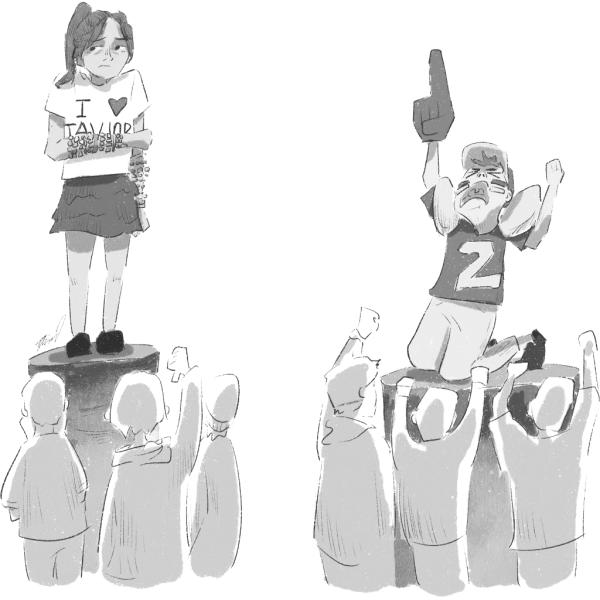Campaign finance system leads to political corruption
November 2, 2022
In this year’s California legislative races alone, more than $80 million has already been spent. Political campaigns are generally an extremely expensive process, with expenditures going towards traveling costs, political consulting, and advertising to name a few. In the 2014 election cycle, members of the state legislature had to raise, on average, more than $1,000 per day for their campaigns. An independent analysis found that it took $1.1 million to win a seat in the California State Senate.
Evidently, a single candidate can’t generate these funds alone. Campaign finances are largely dependent on donations, thats limits are set by federal and state laws. For example, with candidates running for California governor, individuals, corporations, unions, and political action committees (PACs) can donate up to $28,200 and single candidate committees, or those geared towards a single candidate, can contribute up to $4,200. Super PACs, which are allowed to independently raise money for campaigns, are not allowed to contribute any money directly to candidates. Instead, they advocate for or against candidates, propositions, or measures themselves.
While such limits were intended to reduce corruption in the system, wealthy supporters often register as independent nonprofits to bypass the set contribution limits.
In 2016, for example, Jose Susumo Azano Matsura, a businessman wanting to further waterfront development in San Diego, was convicted of using $500,000 in illegal foreign money in attempts to win the San Diego mayoral race. He too used a super PAC and shell company to disguise the funds’ source.
But the issue extends far beyond money laundering. These donations are not a one-way deal. Ultimately, if candidates want to continue receiving money, they must please donors with the way they vote once elected into office. The concept is simple: if hypothetically, Ted Cruz was primarily funded by big-oil companies, it would be rather difficult for him to support renewable energy legislation without losing an important backer.
Unfortunately, we’ve seen campaign finances unfairly influence voting issues in the past. Candidates end up representing the corporations that finance them instead of the people they should be serving.
In 2017, when Congress was debating on a tax reform package, the head of super-PAC Congressional Leadership Fund Corey Bliss gave House Republicans an ultimatum. If representatives voted against the bill, the Congressional Leadership Fund blatantly said that it would not support those candidates. Unsurprisingly, GOP senators and representatives opposed the bill and in 2018, the Congressional Leadership Fund spent $138 million on GOP candidates.
During the 2020 election, U.S. oil and gas companies spent $87 million on campaign contributions. Even President Biden, who pledged not to accept donations exceeding $200 from the fossil fuel industry took more than $895,000 from individuals and PACs from the oil and gas industry, according to the Center for Responsive Politics.
Research has found a correlation between an increase in anti-environment votes and contributions from the oil industry. Specifically, a 10% decrease in the National Environmental Scorecard was associated with an additional $1,700 in oil-corporation campaign money.
According to a study conducted by the North Carolina State University, among other associations, “house members who had invested in financial and automotive stocks supported legislation aimed at bailing out the financial and auto sectors.”
Money’s influence is alarming. Votes on gun control legislation can be predicted with 95% accuracy when using legislators’ campaign finance receipts from the gun industry. In fact, the Institute for New Economic thinking found that “a Democrat who takes any amount of NRA [National Rifle Association] money is about 4 times as likely to cast an anti-gun control vote as those who don’t.”
The consequence of our current, flawed campaign finance system is that a very small, but wealthy population has an immeasurable amount of control in elections, and subsequently, can influence the laws that allow them to stay in power. Merely 11 donors have given $1 billion to super PACs.
Despite public condemnation, super PAC spending is only on the rise, from $600 million in 2012 to more than $1 billion in 2016. Bribery and corruption are so intertwined with the campaign finance system that it would take a near-complete rehaul of the system to remove the influence of special interest groups.
It’s essential we look beyond the grandeur of candidate statements. It’s critical that we look behind the scenes at who funds candidates, who supports them, who endorses them– it’s far more telling.
Check campaign financing for California candidates and measures here: https://powersearch.sos.ca.gov/quick-search.php
Check federal individual contribution data here: https://www.fec.gov/data/receipts/individual-contributions/?two_year_transaction_period=2022&min_date=01%2F01%2F2021&max_date=12%2F31%2F2022






